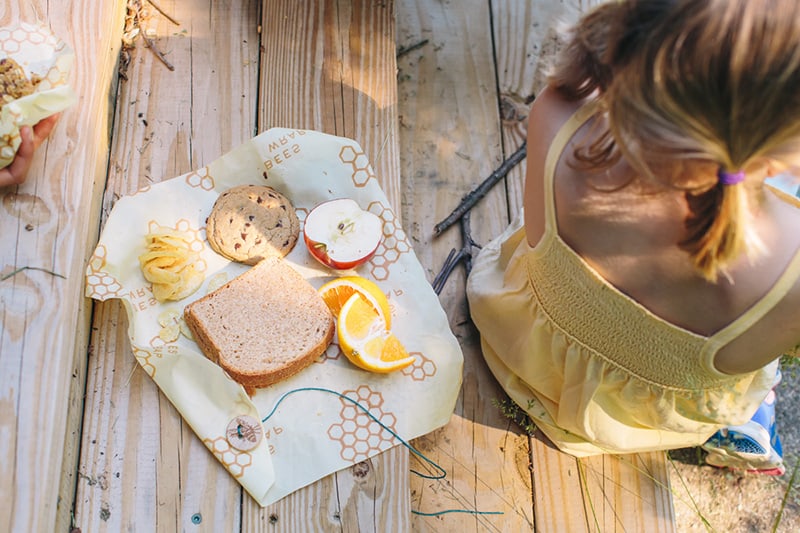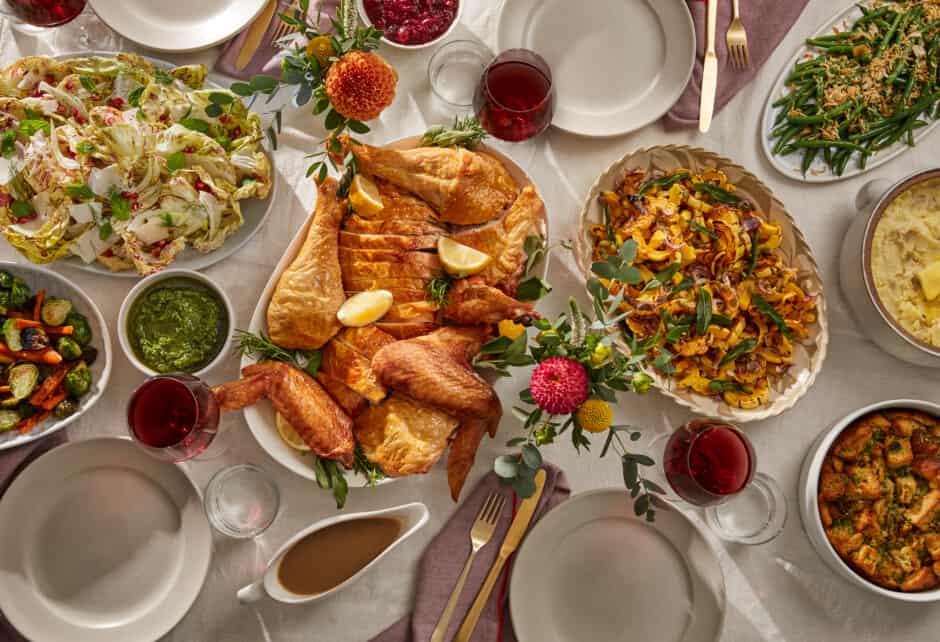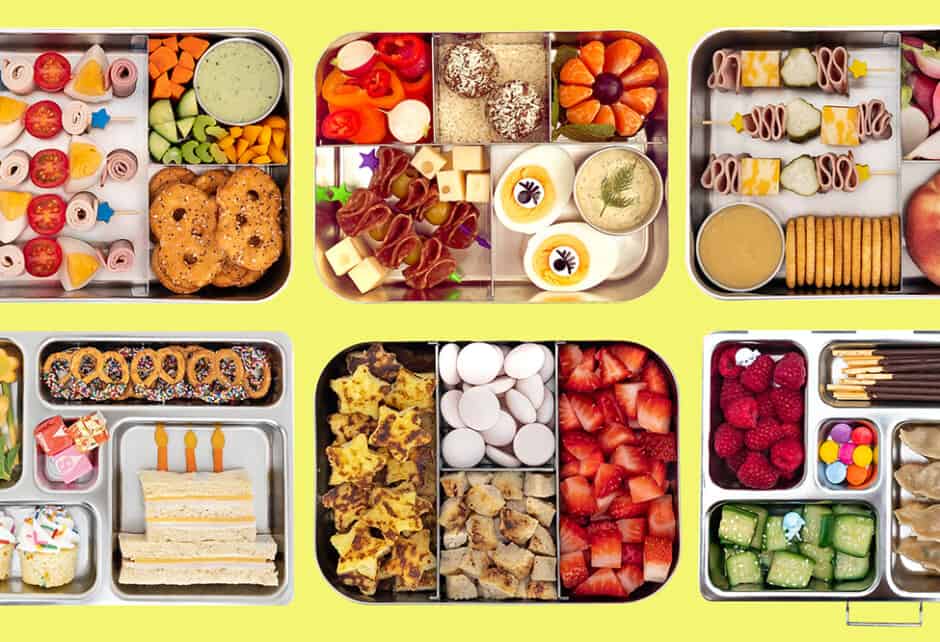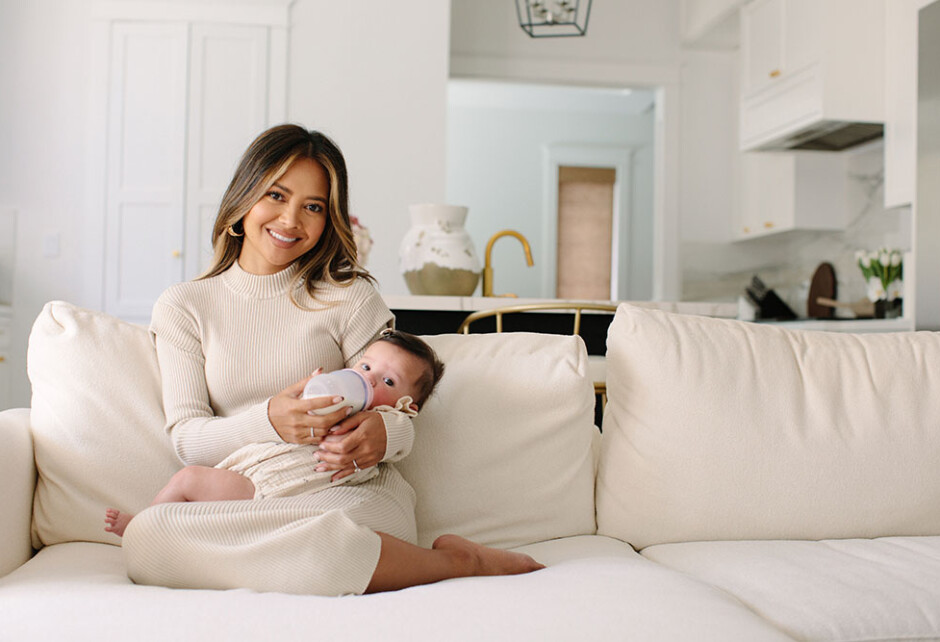
10 Tips for Packing a Zero Waste Lunch
Written by Sara Langer
Photography by
Photo Via Bee's Wrap
Did you know that on average a child in the U.S. will generate up to 67 pounds of waste each school year, just from their lunch? That adds up to almost 20,000 pounds of trash for an average elementary school every year! While it may feel like a small difference, striving to create less waste on a daily basis, even if you’re not 100% zero waste, can have huge ripple effects. And many schools are taking note, creating their own policies around students packing a waste-free lunch. The morning scramble to get everyone up, dressed, fed, with their backpacks and lunch packed can be chaotic, so grabbing pre-packaged and convenient items may be tempting. But, if you can cut out individually packaged items and plastic bags, not only will your family create less waste and eat healthier without the processed and packaged foods, it will end up saving you money. Is all of this easier said than done? Maybe so, but if you can plan a bit in advance and get into a routine, you’ll probably end up saving time, money, eating healthier, and lowering plastic footprints. With this goal in mind, we’re sharing 10 tips that will help you lighten your family’s footprint when it comes to packing lunch.
Stock up on reusable lunch supplies.
There are so many wonderful options available these days for reusable lunch containers. You’ll want to make sure you have a good arsenal to make packing lunches easy. If you’re buying new containers, ditch the plastics and try stainless steel options, like ECOlunchbox, which come in a variety of shapes and sizes. PlanetBox and LunchBots are other great options if you want an all-in-one, bento-style lunch box. We love the simplicity of reusable beeswax wraps, like Bee’s Wrap, and these sealable, silicon Stashers snack and sandwich bags (which can even be dropped in boiling water for home cooks who like to sous vide!)—both are perfect waste-free way to pack a sandwich. And because there is no such thing as too many snacks, we also adore these new reusable snack bags from Parkland. Pick up a pack of metal straws and keep one in everyone’s bag, so no one is tempted to pick up a plastic one. Don’t forget to include a reusable water bottle, utensils, and a cloth napkin, too.
Send leftovers or do some batch cooking.
Cut down on your prep time and your overall environmental impact by cooking or preparing larger portions at once. Either make double the amount for dinner so the whole family has a portion for the next day or plan one day a month when you can prep a huge amount of food at once and portion off and freeze things to eat later. This way you always have something convenient available. You can keep it super simple and make 20 or 30 PB&J (or replace the P, if your child’s school is nut-free) sandwiches in one day. Freeze them together in a larger container, then take one out in the morning and wrap it up, allowing it to thaw before lunch time. You can do something similar with yogurt. Buy one large tub, then individually freeze smaller portions with fresh or frozen fruit. That’s less packaging than the individual cups and there’s no need for an ice pack to keep the yogurt cold since it is coming from the freezer. Setting aside one day a month to shop and prep so you have things that are healthy, easy, and not pre-packaged, will end up saving you time and money, creates less trash, and requires less resources overall.
Choose vegetarian or vegan options.
Meat-free and dairy-free foods can often go for longer periods of time without refrigeration, so you are more likely to be able to save or reuse anything that did not get eaten that day. Eating a vegetarian meal can also lower your carbon footprint and usually cost less to prepare or buy. Even if your family eats meat, lunch is usually an easy meal to cut out animal protein.
Pack what you know your kids will eat.
Don’t try to be super adventurous or test out new foods when you are packing lunches. You want to make sure your child eats a good lunch, so pack things that you know they will like and save the introductions to different cuisines for dinner at home. If you can think of a handful of simple dishes or meals you can repeat, that makes it easier for you and it can be a comfort to your kids. Knowing that there is something packed in their lunch box that will be satisfying and taste good can provide some comfort during the transition of lunch time and some of the other challenges that come along with it.
Shop the bulk bins.
The bulk bins are you best friend when it comes to striving for zero waste. You can bring your own large containers to the store and fill them up with your favorite snacks and treats like nuts, dried fruit, granola, or yogurt covered pretzels. The bulk sections at some stores can be pretty extensive these days, so get to know them and let your kids test out some different snacks. When you want to pack them for lunch, use a reusable bag or small container and fill with a snack-sized portion.
Pack it in, pack it out.
Try and get your kids to pack everything back into their lunch box at the end of their meal. There won’t be any trash, but there may be leftover food or even the peel of a piece of fruit. Let your children know that they won’t get in trouble if they didn’t eat very much, you just want to see how much they ate and what they did and did not like so you can help pack the right food and portion size. Over time this will help you adjust the amount of food and figure out what they do and don’t realistically eat for lunch. If some of the food that is leftover is not perishable, you can reuse it for the next day’s lunch or another meal. Any left over food scraps can be tossed, but over time hopefully there will be less leftover and wasted.
Start a compost bin.
If you have a yard, creating a compost bin is a great way to cut down on your waste. If you can’t do a compost bin yourself, look into resources in your area. Many cities offer compost pick-up or if you do a search you can often find places where you can drop your compost off. Any food scraps that come home from lunch or from any other meal can go into your compost. If you’re doing it at home, you will need to be more selective about what you put in the bin than if your city has compost pick-up, so make sure you do your research.
Shop local and seasonal.
Hit up the farmer’s markets in your area as often as you can. If you don’t have one close to you or they don’t run year-round, try and buy produce that is in season and grown as close to home as you can. Precut, washed, and packaged fruits and veggies can be very convenient, but they tend to go bad faster and they are a lot more expensive than whole produce. Having as many fresh options available as possible will create healthier lunches with little to no waste. Whole pieces of fruit are some of the best zero waste lunch items because they don’t need a container. Don’t forget your reusable produce and grocery bags when you go shopping.
Have your kids help.
Bring you kids grocery shopping or to the farmer’s market and include them in the planning and packing process. Giving them the responsibility of being a part of the process will help them build independence, which will lighten your load a bit over time. If your kids are a part of choosing and making lunch they are more likely to eat what they have packed and therefore bringing home less waste and filling up on a nourishing lunch.
Get the PTSA involved.
Some schools have already adopted zero-waste lunch programs that require all children to bring their lunch in reusable containers. If that isn’t the case in your children’s school, get involved and encourage other families to strive for less-waste lunches, too. The EPA has created free printable posters that can be hung in schools that provide some of the facts and benefits around zero-waste lunch. Some schools even have their own compost bins, so children can scrape their lunch waste right into a bucket and the compost can be used in a school garden. If there are a few parents, teachers, and students who are interested in spearheading projects like these, usually the administration will be on board. It’s a great way to teach children about the impact of their food choices on the environment.
For more back-to-school lunch inspiration, check out our piece on A Week’s Worth Of Easy & Nutritious School Lunch Ideas and 30+ Stylish Lunch Boxes We Love.
Share this story




